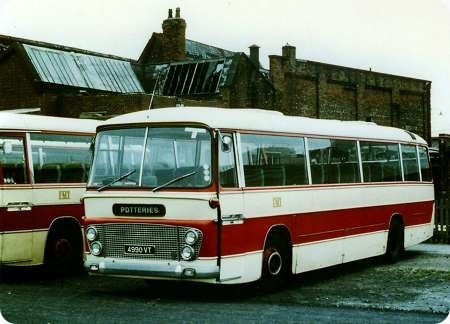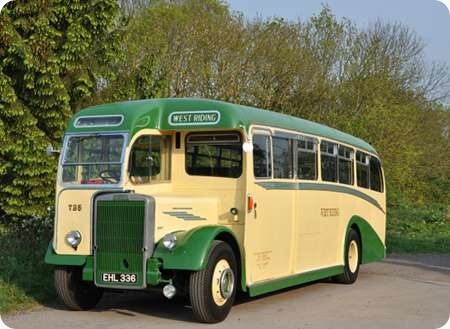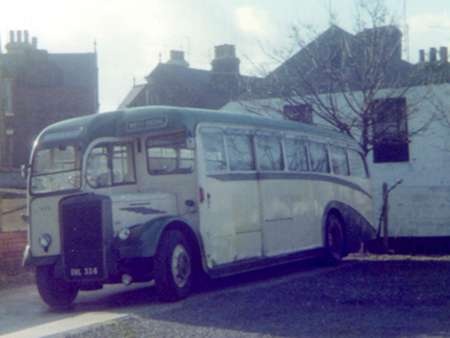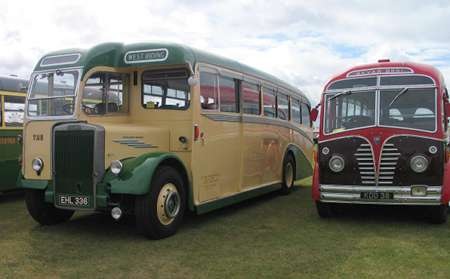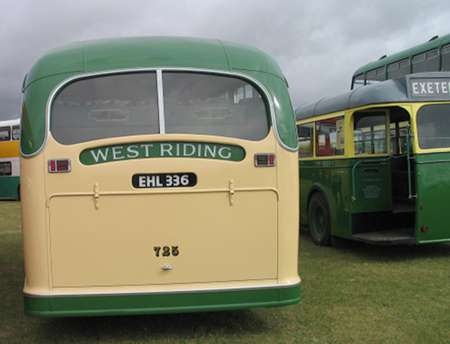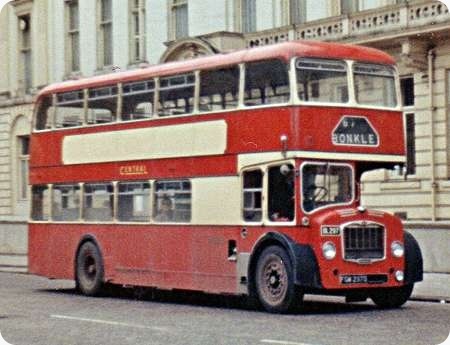P M T – AEC Reliance – 4990 VT – C990
Potteries Motor Traction
1964
AEC Reliance 2U3RA
Duple C49F
Potteries Motor Traction took delivery of six of these fantastic vehicles in 1964 they had the AEC 590 engine and 6 speed ZF manual gearbox. Drivers and passengers loved them, 4989 VT won the 1964 Brighton coach rally. I have not driven a coach before or since as good as these splendid vehicles. The company got rid of these vehicles in 1976 the older drivers like myself still talk about them now, there was nothing like driving down the third lane of the M6 motorway at about 75MPH which at that time was legal. Oh happy days.
Photograph and Copy contributed by Michael Crofts
11/08/13 – 08:31
Brings back happy memories of Sheffield United Tours and Cyril (C G) Littlewood with their ZF Reliances roaring in and out of Pond Street to and from the north of Scotland, the south of England and continental venues as far away as Switzerland, Italy and Yugoslavia. As Michael says, fantastic vehicles – to ride in and to drive,
David Oldfield
14/08/13 – 11:17
Back in 1965-67 I used to do a regular monthly trip through PMT land, usually starting off with a ride from Manchester to Leek on North Western’s X1 (operated by the previous year’s Y-types, quickly relegated from the X5 to London). After a visit to Berresfords in Cheddleton I’d carry on to Hanley to see what was new with the independents there and then return to Manchester on PMT’s afternoon X2 departure.
On one occasion this was operated by this very machine which made a pleasant change – PMT were in the habit of throwing any old rubbish at this route with lowbridge Atlanteans quite common at busy times. You never realised how uncomfortable these were until you’d spent two hours on one!
Neville Mercer
31/10/13 – 07:16
I remember 4989 VT, as I sometimes travelled to School on it when it was operated by a firm from Bugbrooke Northamptonshire. They sold it in around 1975. I believe it is in that great Coach park in the sky now more’s the pity. The regular driver said it was good for 90 mph on the motorway. No Tachographs or Speed Limiters in them days!
Stemax1960
01/11/13 – 08:12
Overheating was a problem with these six coaches when driven for long periods in 6th gear such as on motorway work. Some had 6th gear blanked off which had the consequence of lowering the top speed but ensuring reasonable fan revolutions. Fleet number C991 had a tandem radiator fitted, from memory as an AEC initiative to overcome the problem. Whilst I can remember the fitment, I can’t recall the result! Too many years ago. I assume that SUT and other Operators had the same problem?
Ian Wild
01/11/13 – 13:51
I remember a journey from Great Yarmouth to Sheffield in August 1968. Part of the route was on the A1 around Newark, fast, even in those days. We were "going like stink" with our C reg, SUT, 2U3RA Reliance (with AH590) – 356-365 batch. Suddenly we were doing about 30mph – for quite some time. Later, when I questioned the driver, he said she was overheating so he slowed up to give her a chance to cool down. SUT put an experimental air scoop under the grille of B reg 349 – from 346-355 – but this was not entirely successful and was subsequently removed. As I have said before, the wet-liner AH590 – and its problems – lost AEC a lot of friends. Others like SUT and Yelloway persevered and the AH691 and AH760 repaid their persistence. Heavyweight ZF Reliances were thoroughbreds which were a delight to drive and to ride in. The AH590 let the side down.
David Oldfield
